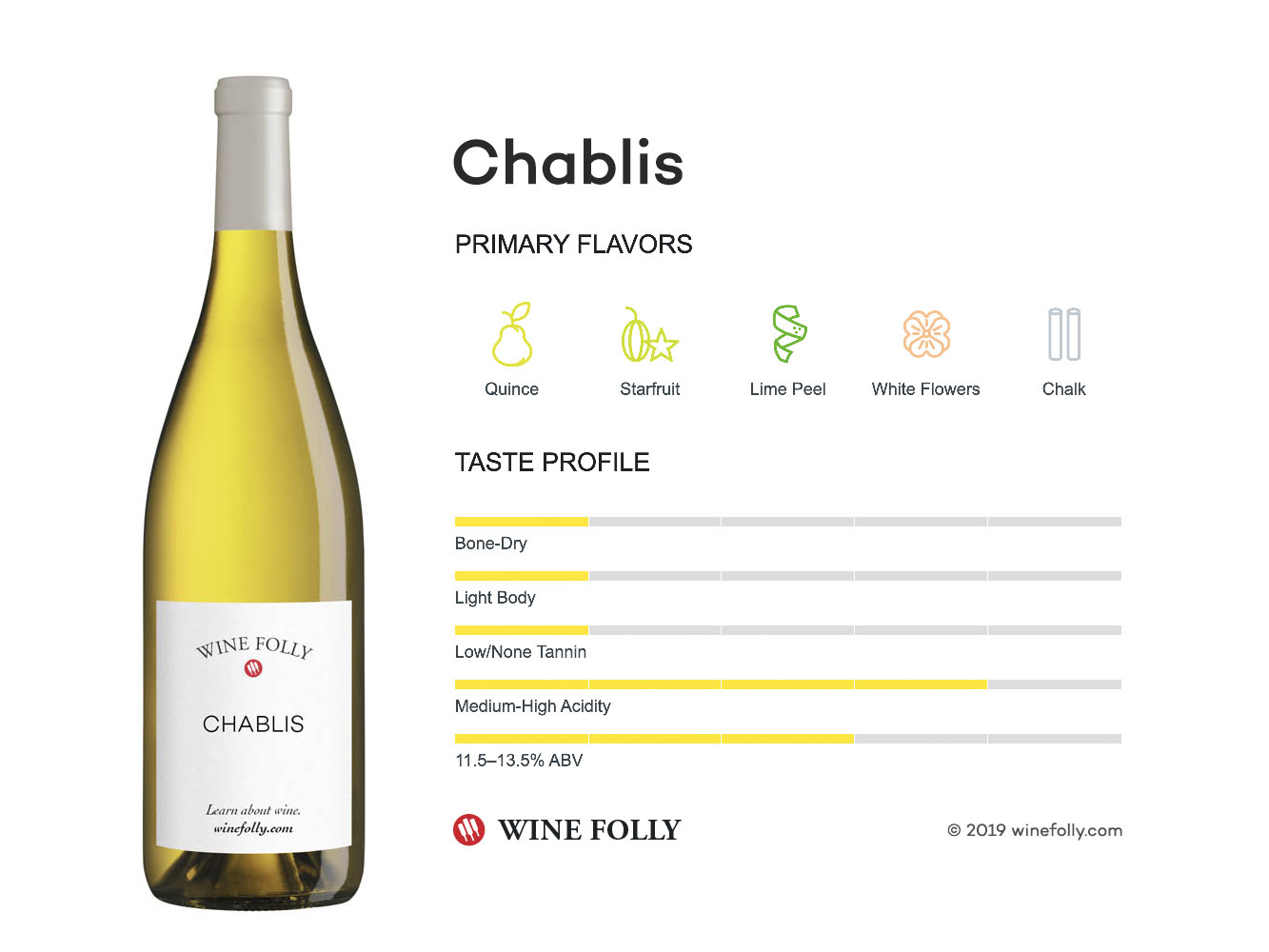
For a white wine of this quality, that’s competitive.

ranges from the upper teens to the lower $90s. Excepting a few outliers, Chablis in the U.S. Scroll down to the end of ’s Chablis page to see its database of retail vendors and prices. I probably don’t have to tell you that real Chablis costs quite a bit more.
#Chablis wine cost free#
So mega-corporate labels like Livingston Cellars Chablis Blanc, Franzia Vintner Select Chablis, and Carlo Rossi Chablis in its classic 1.5 liter jug, are free to continue using or abusing the French name on these low-end table wines for prices that work out to $3 to $5 for a standard 750ml bottle. But pre-existing uses of these names were allowed to continue calling their semi-generic whites “Chablis.” In other words, “Chablis” is forbidden (as well as a bit socially unacceptable) on most U.S. What? Perhaps under political pressure from America’s gigantic wine mass producers, a grandfather clause in the 2006 agreement allows for preexisting uses of these semi-generic names on wines made outside Europe. “Chablis is one of the most famous names in white wine, New York Times wine columnist Eric Asimov wrote in 2014, “so famous that after Prohibition, big American wine producers appropriated the name for their white wines, a practice that continues today with the cheapest jug wines.” agreed to prohibit the use of semi-generic European wine and place names like Champagne, Burgundy, Rhine, Chianti … and Chablis. As the European Union evolved, it forged new rules and international trade agreements protecting the names of traditional European products like wine and cheese. Not only have customs changed as most of us learned more about wine, but labeling laws and international trade agreements have evolved as well. And nowadays just about everyone knows enough to call for their simple glass of white wine by s varietal name, Chardonnay or Pinot Grigio or what have you. As Americans became more wine-savvy, “a glass of Chardonnay” became the bar call for a generic white wine that may or may not have been actually Chardonnay-based. “Be forewarned: there is only one true Chablis, only from France.”įortunately, times have changed. “The name “Chablis” has long been usurped and sometimes still is,” the Vins de Bourgogne website tersely warns on its extensive Chablis and Chablis Premier Cru page. The French were outraged by this act of vinous plagiarism, and rightly so. When I started writing a newspaper column about wine back in the 1980s, I couldn’t mention Chablis without spelling out the difference between the cheap domestic stuff and the excellent, more expensive Chardonnay-based wine from Chablis, a satellite of the Burgundy region in eastern France. Like what you see? Consider upgrading to our paid tier and join us every week! Already a paid subscriber? Thanks so much. Celebrating three months on Substack, I’m opening this week’s paid-tier edition – my report on an excellent Chablis – to the entire community.


 0 kommentar(er)
0 kommentar(er)
